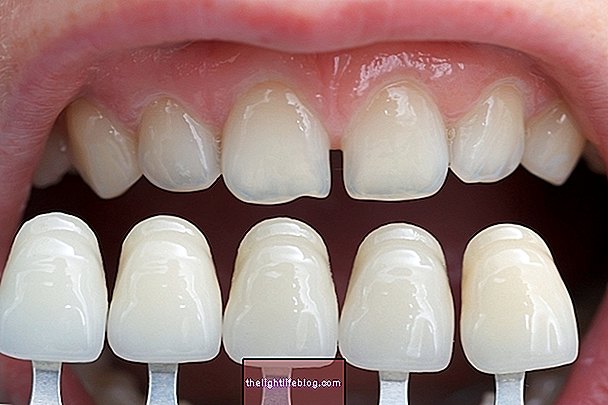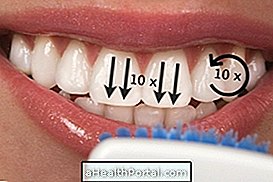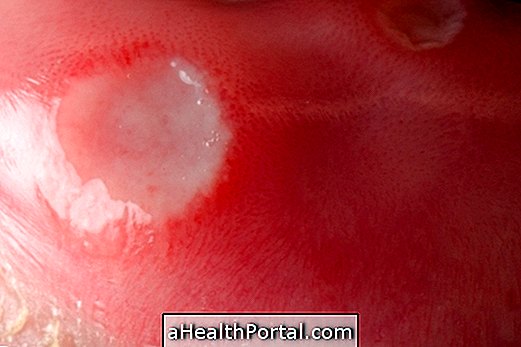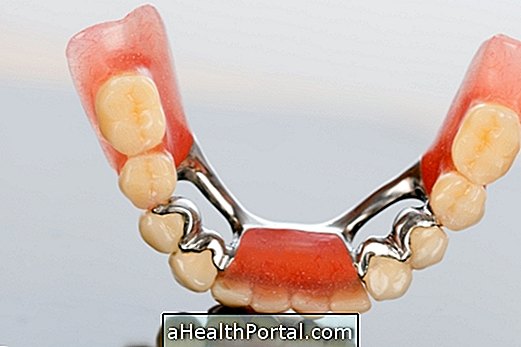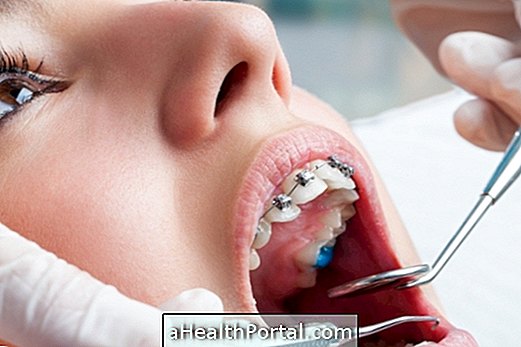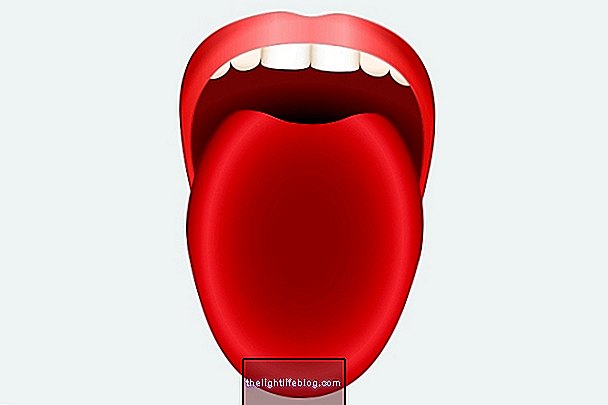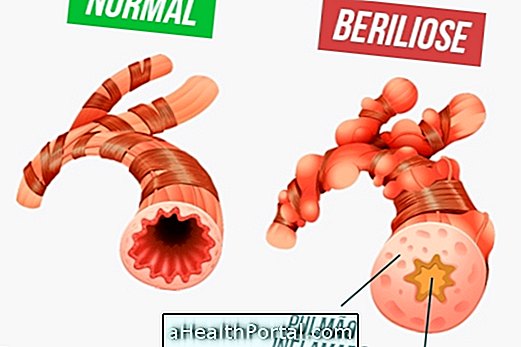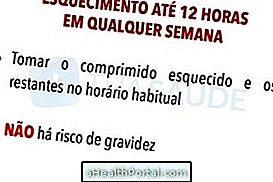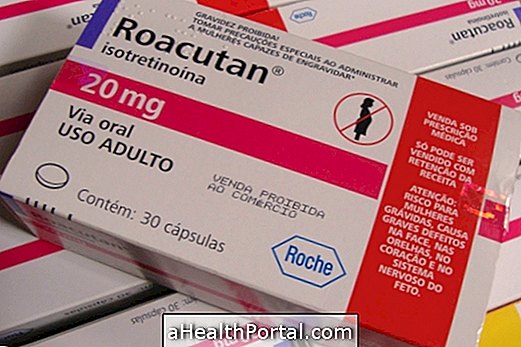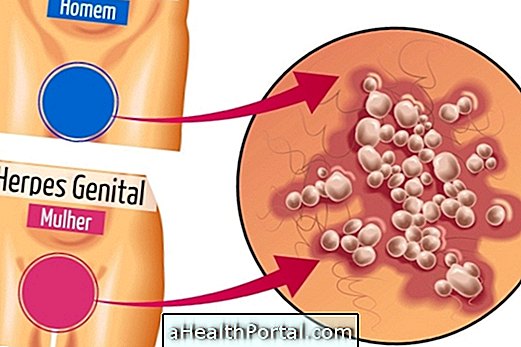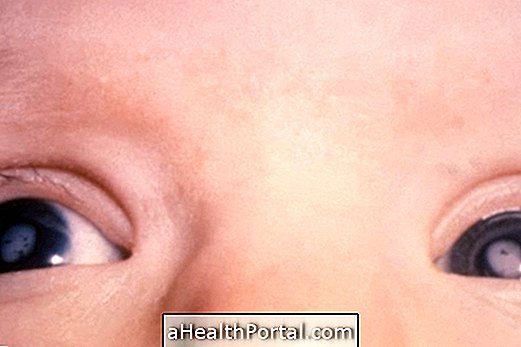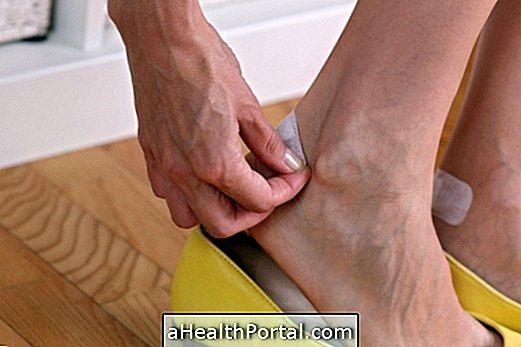The first teeth start to fall naturally at around 6 years of age, in the same order that they appeared. Thus, it is common for the first teeth to fall out to be the front teeth, as these are the first teeth to appear in most children.
However, each child develops in a different way and therefore, in some cases, another tooth may be lost first, without indicating any type of problem. But in any case, if there is any doubt, it is always best to consult the pediatrician or a dentist, especially if the tooth falls before the age of 5 or if the fall of the tooth is related to a fall or a blow, for example.
Here's what to do when a tooth falls or breaks due to a blow or fall.
Order of fall of baby teeth
The order of the fall of the first milk teeth can be seen in the following image:

After the fall of the baby tooth the most common is that the permanent tooth is born within 3 months. However, in some children this time can be longer, and therefore it is important to follow the dentist or pediatrician. The panoramic x-ray examination may indicate whether the child's dentition is within the expected range for his age, but the dentist should only perform this examination before the age of 6 if it is extremely necessary.
Know what to do when the baby tooth falls, but the other one takes time to be born.
What to do after a knock on the tooth
After a trauma to the tooth, it can break, become very malleable and fall, or become stained or even with a small pus ball in the gum. Depending on the situation, you should:
1. If the tooth breaks
If the tooth breaks, you can store the piece of the tooth in a glass of water, saline or milk so that the dentist can see if it is possible to restore the tooth by gluing the broken piece itself or with composite resin, improving the appearance of the child's smile.
However, if the tooth breaks only at the tip, it is generally not necessary to perform any more specific treatment and applying fluoride may be sufficient. However, when the tooth breaks in half or when there is almost nothing left of the tooth, the dentist may choose to restore or remove the tooth through minor surgery, especially if the root of the tooth is affected.
2. If the tooth becomes soft
After a blow directly into the mouth, the tooth may become malleable and the gum may be red, swollen or pus-like, which may indicate that the root has been affected, and may even become infected. In such cases, you should go to the dentist, as it may be necessary to remove the tooth through dental surgery.
3. If the tooth is crooked
If the tooth is crooked, out of its normal position, the child should be taken to the dentist so that he can assess why the sooner the tooth returns to its normal position, more chances are that it will be completely recovered.
The dentist will be able to place a retaining wire for the tooth to recover, but if the tooth hurts and if it has some mobility, there is a possibility of fracture, and it is necessary to remove the tooth.
4. If the tooth enters the gum
If after the trauma the tooth re-enters the gum it is necessary to go to the dentist immediately because it may be necessary to do an x-ray to assess whether the bone, the root of the tooth or even the germ of the permanent tooth have been affected. The dentist may remove the tooth or wait for it to return to its normal position alone, depending on the amount of tooth that has entered the gum.

5. If the tooth falls out
If the lying tooth falls out prematurely, it may be necessary to perform an x-ray to see if the germ of the permanent tooth is in the gum, which indicates that the tooth will be born soon. Normally, no specific treatment is necessary and it is enough to wait for the permanent tooth to grow. But if the definitive tooth takes too long to be born, see what to do in: when the baby tooth falls and another one is not born.
If the dentist considers it necessary, he can suture the site by giving 1 or 2 stitches to facilitate the recovery of the gum and in the event of a fall of the baby tooth after a trauma, an implant should not be placed, because it can impair the development of the permanent tooth. The implant would only be an option if the child does not have a permanent tooth.
6. If the tooth goes dark
If the tooth changes color and becomes darker than the others, it can indicate that the pulp has been affected and a color change that manifests itself days or weeks after the trauma to the tooth can indicate that the root of the tooth has died and that it is necessary make your withdrawal through surgery.
Sometimes, a dental trauma needs to be evaluated right after its occurrence, after 3 months and still after 6 months and once a year, so that the dentist can personally assess whether the permanent tooth is being born and whether it is healthy or needs some treatment.
Warning signs to return to the dentist
The main warning sign for going back to the dentist is toothache, so if parents notice that the child complains of pain when the permanent tooth is being born, it is important to make an appointment. You should also go back to the dentist if the area is swollen, very red or with pus.
Was this information helpful?
Yes No
Your opinion is important! Write here how we can improve our text:
Any questions? Click here to be answered.
Email in which you want to receive a reply:
Check the confirmation email we sent you.
Your name:
Reason for visit:
--- Choose your reason --- DiseaseLive betterHelp another personGain knowledge
Are you a health professional?
NoMedicalPharmaceuticalsNurseNutritionistBiomedicalPhysiotherapistBeauticianOther
